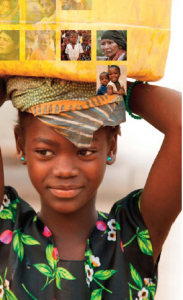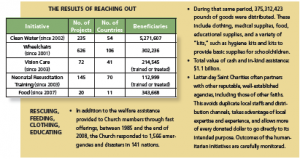I have been looking forward to spotlighting THARCE-Gulu on the Women’s Service Mission since I first heard about it. It was founded by Boston Stake Relief Society President, Judith Dushku, who is a university professor of political science. She took her students to Uganda after learning about the political upheaval in the region and met survivors of the conflicts there–women who had been child soldiers and sex slaves. In her work in Gulu, Uganda, Judith has already helped to coordinate the building of a house to the women there. Her current effort is to create a Trauma, Healing and Reflection Center to support the women there as they overcome and process their traumatic experiences.

Along with her daughter Eliza Dushku (former cast member from Buffy: The Vampire Slayer), Judith is trying to raise $30,000 to build the land for the center at THARCE-Gulu. They are about a quarter of the way to their goal and hope to achieve it by Dec. 30, in time for Eliza’s 30th birthday.
Two of our WAVE board members also serve on the board of THARCE-Gulu and will traveling to Uganda in 2011 to continue the work on the center there. To learn more about Judith and their work, read the article “Mormon feminism meets global challenge” from the Salt Lake Tribune.
Feminist Mormon Housewives is hosting an online raffle to support this worthy effort. You are encouraged to donate via Paypal but you can also send a check (see fMh post for details). To be entered in the raffle click “special instructions to seller and mention fMh, Exponent II, By Common Consent, WAVE or any bloggernacle blog).
A large donation is not needed, so please do what you can. Its wonderful to see these humanitarian efforts inspired by feminist consciousness and by the faith and love of Relief Society sisters a world apart.




